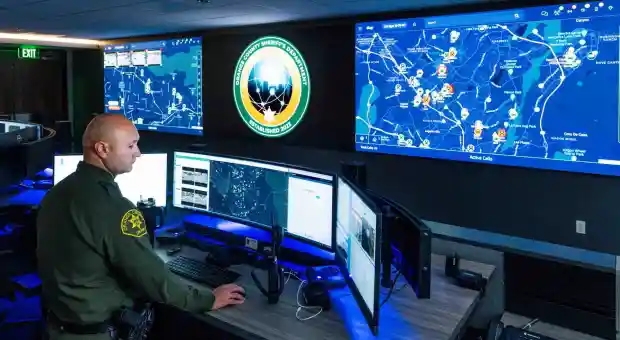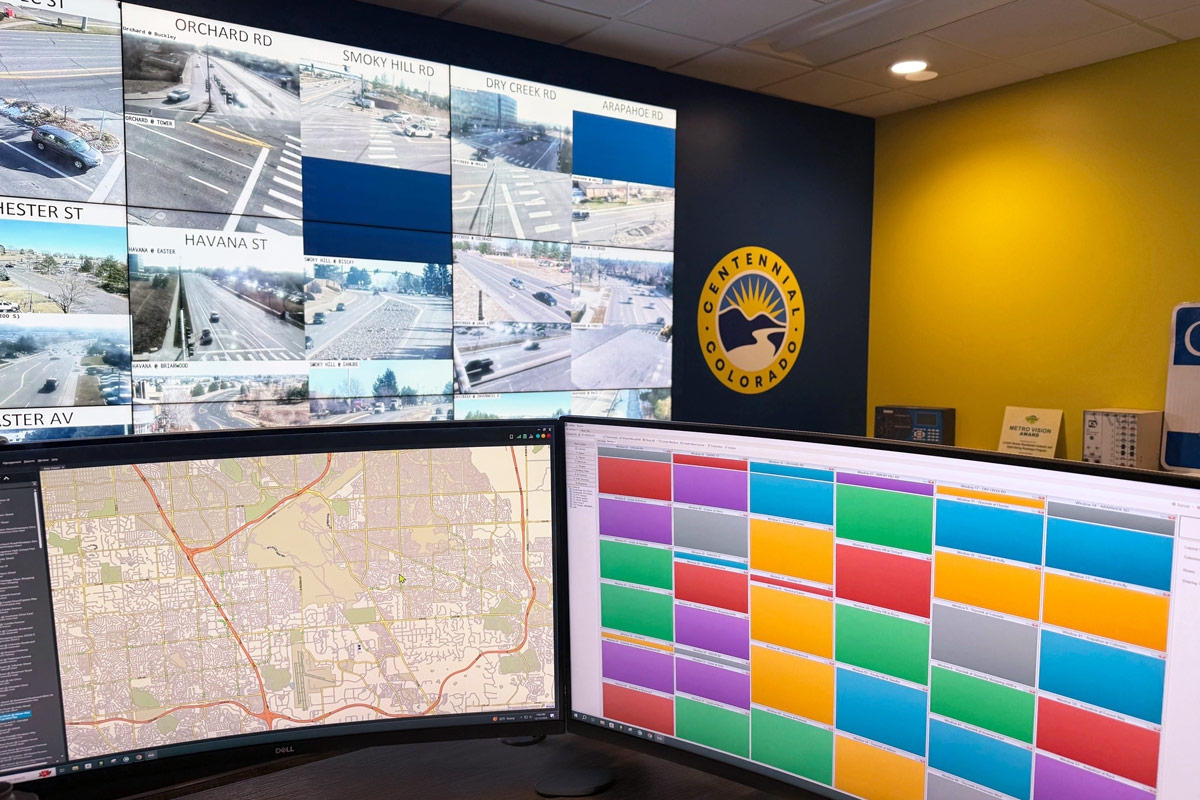RGB Spectrum’s Hybrid Approach to AV System Design
Overview
AV system design is full of challenges. Determining the customer's needs and selecting the appropriate equipment is just the beginning. The installation and ongoing maintenance of the installation is a major investment of your time and resources. And of course, the needs will change during and after installation.
AV spaces are being tasked with a more diverse set of functions than ever before. The building lobby is also the company's all-hands meeting space. Control rooms are also used as Emergency Operation Centers. The kitchen is also used as a conference room. And so on. Each of these users has their own needs that may not be in sync with the day-to-day operations of the space – not to mention what may be needed in the future. The equipment installed in these areas must be flexible enough to allow for overlapping current usage and future possibilities. Designing for these changing requirements is what we call a hybrid approach to system design.
Our hybrid approach encompasses several philosophies. First, hybrid systems rely on today's proven technology while allowing for future technology to be included when needed. Next, our hybrid approach to system design incorporates solutions across differing product platforms to provide the optimum functionality. Last, we provide a hybrid of control paradigms developed for the basic as well as advanced users. These tenets of a hybrid approach to system design result in a solution optimized for functionality, flexibility, and price.
Workflow Considerations in a Hybrid System
Through advances in Video-over-IP, HDBaseT, and other technologies, the number of destinations keeps growing while getting farther and farther apart. Luckily, the world is enormously more connected today than ever before. For example, as of early 2018 there are approximately 448 submarine cables in service around the world connecting every continent except Antarctica. The new MAREA cable can carry 160 Tbps (terabits per second, equal to 1 million megabits per second). This unparalleled connection speed brings people and resources together like they are just in an office down the hall. Today's AV installations must include options for remote offices and equipment.
 Managing control of rooms and resources spread across the world is no easy task. Quick and simple control is required for both safety and usability considerations. Sharing content over a network takes advanced capabilities that can be updated frequently as technology changes.
Managing control of rooms and resources spread across the world is no easy task. Quick and simple control is required for both safety and usability considerations. Sharing content over a network takes advanced capabilities that can be updated frequently as technology changes.
User interfaces must be designed to give operators visual cues in case they are not in front of the destination video wall or display. For example, a user interface that displays thumbnails of each IP stream in the system, allows operators to make better decisions, faster.
Control systems must include options for non-technical operating personnel like drag-and-drop routing. which may not be a part of some standardized solutions. By using a hybrid approach, a control architecture can be included offering functionality such as drag-and-drop routing across different platforms. This ease of use reduces training time and minimizes errors.
Video walls serve many purposes. They offer a large canvas to display many pieces of information at a time in a control room. They can also showcase a single piece of content across a number of individual displays for digital signage. Considering our connected world, the functionality to share that video wall while also providing different combinations of sources is now a critical piece of the AV puzzle.
Today's video processors need to be able to share a live feed of the entire video wall canvas to a remote location. Digitally encoding the entire video wall or any portion thereof ensures that remote viewers are kept in the loop and can be a part of any discussion. From emergency operation centers to corporate collaboration rooms, these environments are more inclusive thanks to new video encoding capabilities built into some video wall processors.
Future Expansion with a Hybrid System
Once the customer needs have been met and the system is installed, you are done, right? Not so quick. Any system put into service today will be asked to incorporate new sources and destinations soon after installation. Even with RGB Spectrum's system design assistance before and during the installation, new people come into an organization with different needs, companies expand or consolidate operations, and new equipment is purchased to be incorporated into the system.
Systems that rely on standardized, difficult-to-change solutions require the user to either put up with the problems they face every day or spend more money to replace the entire system. Hybrid systems are designed with expansion in mind and allow changes post-installation.
RGB Spectrum's hybrid approach allows users to add functionality as they need it. If a new office is opened, our hybrid systems allow a quick and easy way to bring them into the existing system. When additional capabilities are required, we offer a simple, cost-effective upgrade path to enable more features.
RGB Spectrum's Products Deliver
System design often begins with the main video wall processor. Our wall processors are the central hub of the system where all the sources are aggregated, and all the outputs for displays, projectors, and video walls are configured. We offer a range of highly configurable video wall processors that excel at handling traditional wired, or baseband sources, and newer IP-based sources across a network. Our processors handle outputs much the same way, allowing wired and IP-based destinations.
Galileo Display Processor
Employing a unique hybrid baseband and IP architecture, RGB Spectrum's Galileo display processor is ideal for ingesting, switching, scaling, compositing, and distributing video sources of varying resolutions. The Galileo product line covers the basics of video wall processing: aggregating disparate types of video sources; combining sources into multi-window layouts; synchronizing, scaling, and compositing video; outputting to monitors, projectors, and multi-display video walls of varying resolutions. But it's much more than that.
Every output of a Galileo processor can distribute a unique multi-window layout making it a fully matrixed switcher. Rather than simply switching single video sources amongst single displays, Galileo processors can composite any number of multi-window source layouts and switch them to any variety of individual displays or video walls. Hybrid designs using Galileo products as the main video wall processor enjoy a wealth of configurable options to accommodate any size installation and budget.
Zio Video-over-IP
 Complimenting the on-board IP processing capabilities of the Galileo display processors, RGB Spectrum's Zio Enterprise Video-over-IP platform offers enterprise-wide video, audio and control distribution over any size network. Our intuitive and scalable video control system features powerful admin tools and an easy-to-use GUI with drag-and-drop capabilities and live thumbnails.
Complimenting the on-board IP processing capabilities of the Galileo display processors, RGB Spectrum's Zio Enterprise Video-over-IP platform offers enterprise-wide video, audio and control distribution over any size network. Our intuitive and scalable video control system features powerful admin tools and an easy-to-use GUI with drag-and-drop capabilities and live thumbnails.
The Zio product line provides bandwidth-efficient encoders, decoders, multiviewers, and wall processors to ingest sources from any location and distribute them to any location. Distribution is done over ubiquitous and inexpensive gigabit Ethernet infrastructure. Our peer-to-peer architecture eliminates the traditional head-end server. Any video source in any location around the world can be easily ingested and distributed anywhere across the network, simply by plugging a source's output into a Zio encoder.
Catering to the growing trend of a distributed workforce, the Zio Mobile App enables a remote user to view live streams in real time. Anyone can push streams to mobile devices using Zio's browser-based GUI. Remote users can also browse and select streams for viewing on their mobile device.
Galileo + Zio
The hybrid approach to system design allows RGB Spectrum's Zio Enterprise Video-over-IP products to extend the capabilities of the Galileo display processor in several ways. While the Galileo models maxes out at 56 digital inputs, Zio encoders can be added as needed for an almost limitless number of additional inputs. And all Zio encoded sources are automatically detected by the Galileo and can be used just like any baseband source.
There are two ways to leverage a hybrid system for outputs. Using Galileo's optional encoding functionality or adding Zio encoders to the Galileo processor outputs. Both approaches allow an entire video wall to be recreated in a completely new environment. The new environment could be a single monitor or differently-sized video wall.
Additionally, Galileo's encoding features allow you to select any portion of the video wall or even a baseband source that is not currently displayed on the wall for encoding. This industry standard, H.264 stream can be viewed by any Zio decoder or the Zio Mobile App, for the ultimate in accessibility.
This unique functionality brings greater value to the hybrid system by combining the strength of Galileo to aggregate and display disparate sources and Zio's powerful Video-over-IP capabilities.
Summary
AV systems are no longer a postscript added after a building has been designed and built. Rather video walls, connected conference rooms, and collaboration centers are often the centerpiece of a building or workspace. By using a hybrid approach to AV system design, you can ensure the install will be able to accommodate the following:
- Diversity of sources and destinations
- Diversity of users through a visual UI
- Content sharing across networks
- Future expansion as needs arise
RGB Spectrum's unique hybrid approach to system design allows us to offer a wide range of products to fit any application and budget. Most importantly, we consistently fulfill our user's needs.
RGB Spectrum is a leading designer and manufacturer of mission-critical, real-time audio-visual solutions for a civilian, government, and military client base. The company offers integrated hardware, software, and control systems to satisfy the most demanding requirements. Since 1987, RGB Spectrum has been dedicated to helping its customers achieve Better Decisions. Faster.™





